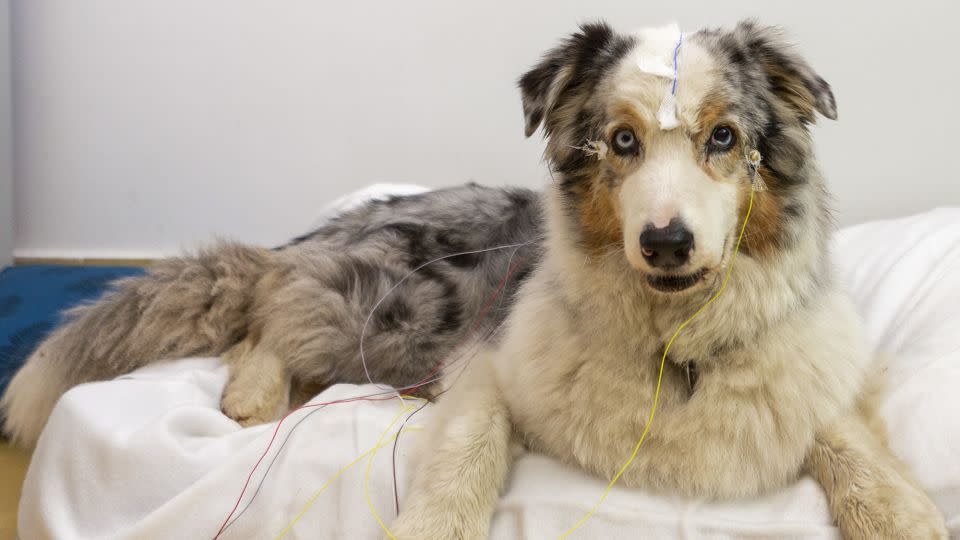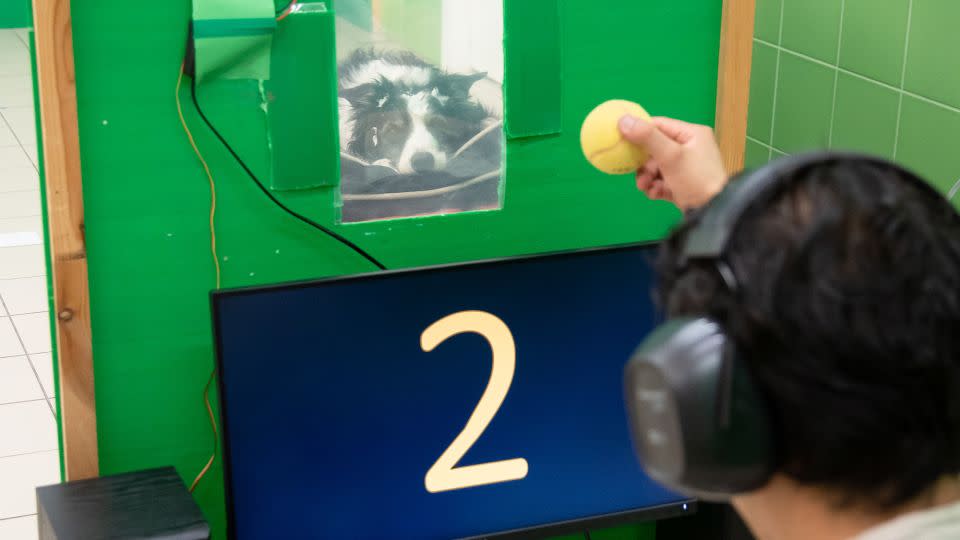According to a recent study, dogs can understand that certain words refer to specific objects, indicating that they can understand words in a similar way to humans.
The researchers said this insight provides the first evidence of brain activity in a non-human animal, but the study’s conclusion has faced scrutiny from other experts in the field.
It has long been known that dogs can learn commands like “sit,” “stay,” or “fetch” and respond to those words with learned behaviors, often with the help of a treat or two. proved to be more difficult.
To understand dogs’ language skills, Lilla Magyari, an associate professor at the University of Stavanger in Norway and a researcher at Eötvös Loránd University in Hungary, and Marianna Boros, a postdoctoral researcher at Eötvös Loránd University, were inspired by studies investigating babies’ understanding before they learn. can speak. They said they decided to imitate these experiments on dogs.
As the study’s lead authors, they designed an experiment in which 18 dog owners said words for objects their dogs already knew. Then, while their owners held up either the matching object or a different object, small metal disks harmlessly attached to the dogs’ heads measured brain activity in a process known as electroencephalography (EEG).
Thus, scientists observed that when shown an object that matched the word, the brain activity of 14 out of 18 dogs was different compared to the object that did not match. The resulting brain activity was identical to that produced by humans in similar experiments, they said.

“Our claim is to say that a dog understands a word, which means that in the absence of the object the dog activates the so-called mental representation,” Boros said. “We can imagine this as the memory of that object.
“When the owner points to an object that does not match this mental representation, a very typical brain response occurs in the dog’s brain that we observe, which is widely considered an indicator of semantic understanding in humans.”
The researchers argued that in the study, there was a two-second gap between owners saying the word for an object and pointing to it, supporting the interpretation that dogs understand words rather than merely associating them with the object.
The words the dogs knew better (as determined by their owners) produced a greater mismatch effect when the wrong object was shown, which the researchers said strengthened their hypothesis.
Previous experiments testing dogs’ understanding of names involved them bringing up specific objects when asked, according to a statement published by Eötvös Loránd University.
This method suggested that dogs retrieved the correct object at a rate expected only by chance; However, as Magyari points out, the dogs may perhaps be unmotivated or distracted during the studies.


“Using EEG, this behavioral response was not required, and the researchers were able to test the dogs’ ‘passive understanding’ because they could perhaps reveal more than what they displayed or were able to show,” he added.
But the true extent of the dogs’ cognitive ability is still unknown, even to the study’s authors, because the dogs were reacting to their own toys and objects that their owners brought into the laboratory.
“From this study, we know that they only expect (their) object when they hear these words,” Magyari said.
“So we don’t know how much (understanding) they have of the relationship between the word and the object, and whether that also reflects categorical knowledge, meaning whether they think the ball is not just limited to their knowledge, but also refers to many ball-like things.” own ball. “This is an issue that further studies should examine.”
Clive Wynne, a professor at Arizona State University and director of the university’s Canine Science Collaborative laboratory, told CNN that the experiment was a “clever” concept but showed that dogs understood a “stimulus” followed by a “significant consequence” rather than intrinsic meaning. to a word.


He said the time delay in the experiment was “neither here nor there; if it was conditioning there could be a gap of a few seconds” and that only familiar words could elicit a response, explaining the larger mismatch effect.
Dogs are missing two brain regions that are vital for humans to understand language, he said, so the EEG pattern highlighted by the researchers is not shared by humans.
“If we’re claiming that the brainwave pattern is showing you that this is what you need to understand words, you need it to be the same pattern,” he said.
The study was published March 22 in the journal Current Biology.
Sign up for CNN’s Wonder Theory science newsletter. Explore the universe with news about fascinating discoveries, scientific advancements and more.
For more CNN news and newsletters, create an account at CNN.com